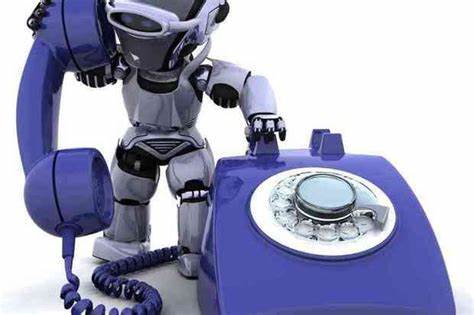Every day most consumers answer a call, get a long pause, then hear a recording promising them something they don’t need or warning them about a problem they don’t have. These are robocalls and they are a nuisance to almost anyone with a phone. YouMail, a company that produces call blocking software, released a report that estimates 47.8 billion robocalls were made to Americans in 2018.
According to the FCC a robocall is a call made with an autodialer or that contains a message made with a prerecorded or artificial voice. Some of these calls are legal and some are not. Automated calls from charities or your local pharmacy telling you your prescription is ready are almost always legal. Political campaigns can contact your landline but not always your cell phone without your permission.
The FCC reports that every three minutes US consumers receive 350,000 unwanted calls, of which 47 percent are scams. These calls are an annoyance, but they also take advantage of many consumers and can be dangerous.
It is important to understand that the FCC requires that telemarketing businesses have your consent to call you. If you are on the Do Not Call Registry provided by the FTC then you are clearly not in the market for a call and would need to give consent. This of course will not stop all robocalls but it can cut them down, and it is also a help in identifying scams as they would not be hindered by the registry.
It isn’t really very hard to identify an illegal robocall. If a telemarketing company reaches out to a consumer that has not given consent to receive the call, then it is illegal. This can be across a spectrum of calls ranging from honest mistakes all the way to criminals attempting to get your social security information to steal your identity. These calls can also include caller-ID spoofing. Robocalls tend to spoof their call back numbers for many reasons, including the fact that if you wanted to call them back you couldn’t. You would actually need a different number to reach the company as their call-bots will not be answering the phones. This type of number spoofing can also be seen when a business shows a toll free call back number when they are calling from a different line.
The FCC has taken many steps to fight robocalls. To date they now allow phone companies to block robocalls by default, banned spoofed numbers from text message, banned international robocalls, and pushed for increased security and technology. This new technology includes a framework that validates calls before they are received called STIR/SHAKEN. This new security measure will help carriers comply with new government regulations requiring them to authenticate every call made on their networks.
Despite all of this US consumers are still getting robocall, so what more can be done? T-Mobile has implemented Scam ID which identifies numbers with labels such as “Scam Likely” or even “Scam Block”. This system was rolled out in 2017 but T-Mobile released that it is ready for and will be using STIR/SHAKEN as the FCC recommends as well. T-Mobile and Comcast also both launched a program called Caller Verified which applies a label recognized by both networks. According to T-Mobile AT&T will also be added to this system soon.
AT&T already has an in-network system to block robocalls, and can offer additional protection with their Call Protect app. This app will let you create and manage your own number block list to prevent repeat callers. Verizon also has an app called Call Filter that helps identify calls that are scams, allows reporting of numbers, and automatically blocks many robocalls. Sprint offers the service Premium Caller ID that helps identify spoofed numbers and robocalls. This is a service, not an app and there is a monthly fee associated with it.
One company, Robocalls.cash, offers a kit that helps consumers get paid for receiving robocalls. This process includes how to write a demand letter to get paid for the unsolicited call. This kit is proced at $47 and includes access to support and a Facebook group.
No app or service is going to keep you 100% safe. Be careful and be alert. IF you are not sure who you are talking with do not give them your personal information and do not purchase anything from them. Hang up, research the company, then make your decision.

